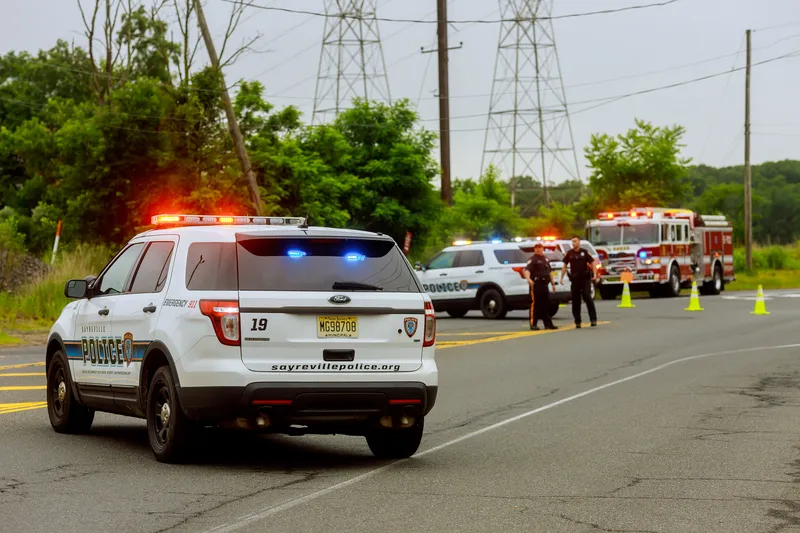The European Commission has published a list of 19 lifesaving safety technologies that could be made mandatory on new vehicles in the next update of EU vehicle safety rules expected next year. The European Transport Safety Council (ETCS) welcomes the announcement but says several critical areas for action are missing, and the proposed timescale is far too long considering that most of the technologies are already available.
ETSC says 26,000 people die on European Union roads annually, with at least
December 20, 2016
Read time: 3 mins
The 1690 European Commission has published a list of 19 lifesaving safety technologies that could be made mandatory on new vehicles in the next update of EU vehicle safety rules expected next year. The 3535 European Transport Safety Council (ETCS) welcomes the announcement but says several critical areas for action are missing, and the proposed timescale is far too long considering that most of the technologies are already available.
ETSC says 26,000 people die on European Union roads annually, with at least 135,000 suffering life-changing injuries. Progress on reducing these numbers has been dramatic over the last two decades, but has slowed to a halt and even gone into reverse in some countries in the last two years. Improved vehicle safety standards are critical to reducing deaths and serious injuries, but the EU’s rules have not been updated since 2009.
In particular, ETSC welcomes the inclusion of automated emergency braking, intelligent speed assistance and seat-belt reminders, three technologies that have a high potential for saving lives. However, it says the true safety potential will only be realised if the more advanced versions of the systems are introduced and on a shorter timescale than that proposed by the European Commission.
In three areas, alcohol interlocks, front-end design of lorries and new crash tests, ETSC is particularly concerned that the Commission has failed to propose appropriate changes.
Alcohol interlocks, which are used in several EU countries to treat repeat drink driving offenders, require drivers to provide a clean breath test in order to start their vehicle. ETSC says a key obstacle to wider use of the technology is the lack of a standardised connection point on vehicles. The Commission proposes to simply ask manufacturers to supply device installers with model-specific instructions, a much more cumbersome approach. ETSC says the proposal is especially weak considering it is the only technical remedy proposed to tackle drink driving, which is responsible for around a quarter of road deaths in the EU.
The Commission has so far failed to include ‘front under-run protection’ for lorries - physical changes that would help deflect vehicles, cyclists and pedestrians in the event of a collision. ETSC also believes the proposed deadline of 2028 for introducing ‘direct vision’ requirements that would enable drivers to see pedestrians and cyclists around the vehicle is also far too long.
In addition, the Commission has not announced a new crash test critical to improving pedestrian protection, namely the ‘upper leg form to bonnet leading edge’ test.
Antonio Avenoso, executive director of the European Transport Safety Council said: “These long-overdue changes are a step in the right direction for road safety in Europe. But giving the industry fourteen years to implement some of the measures is incomprehensible, especially in light of the recent lack of progress in reducing deaths.
“There is also a sense of a growing inequality in road safety. With these proposals, drivers of more affordable vehicles will have to wait almost a decade to get guaranteed access to life-saving technologies that are available today on more expensive cars. And yet again, changes which will benefit pedestrians and cyclists are getting a lower priority with these plans. The Commission must look again at the requirements and deadlines before its legal proposal next year.”
ETSC says 26,000 people die on European Union roads annually, with at least 135,000 suffering life-changing injuries. Progress on reducing these numbers has been dramatic over the last two decades, but has slowed to a halt and even gone into reverse in some countries in the last two years. Improved vehicle safety standards are critical to reducing deaths and serious injuries, but the EU’s rules have not been updated since 2009.
In particular, ETSC welcomes the inclusion of automated emergency braking, intelligent speed assistance and seat-belt reminders, three technologies that have a high potential for saving lives. However, it says the true safety potential will only be realised if the more advanced versions of the systems are introduced and on a shorter timescale than that proposed by the European Commission.
In three areas, alcohol interlocks, front-end design of lorries and new crash tests, ETSC is particularly concerned that the Commission has failed to propose appropriate changes.
Alcohol interlocks, which are used in several EU countries to treat repeat drink driving offenders, require drivers to provide a clean breath test in order to start their vehicle. ETSC says a key obstacle to wider use of the technology is the lack of a standardised connection point on vehicles. The Commission proposes to simply ask manufacturers to supply device installers with model-specific instructions, a much more cumbersome approach. ETSC says the proposal is especially weak considering it is the only technical remedy proposed to tackle drink driving, which is responsible for around a quarter of road deaths in the EU.
The Commission has so far failed to include ‘front under-run protection’ for lorries - physical changes that would help deflect vehicles, cyclists and pedestrians in the event of a collision. ETSC also believes the proposed deadline of 2028 for introducing ‘direct vision’ requirements that would enable drivers to see pedestrians and cyclists around the vehicle is also far too long.
In addition, the Commission has not announced a new crash test critical to improving pedestrian protection, namely the ‘upper leg form to bonnet leading edge’ test.
Antonio Avenoso, executive director of the European Transport Safety Council said: “These long-overdue changes are a step in the right direction for road safety in Europe. But giving the industry fourteen years to implement some of the measures is incomprehensible, especially in light of the recent lack of progress in reducing deaths.
“There is also a sense of a growing inequality in road safety. With these proposals, drivers of more affordable vehicles will have to wait almost a decade to get guaranteed access to life-saving technologies that are available today on more expensive cars. And yet again, changes which will benefit pedestrians and cyclists are getting a lower priority with these plans. The Commission must look again at the requirements and deadlines before its legal proposal next year.”










